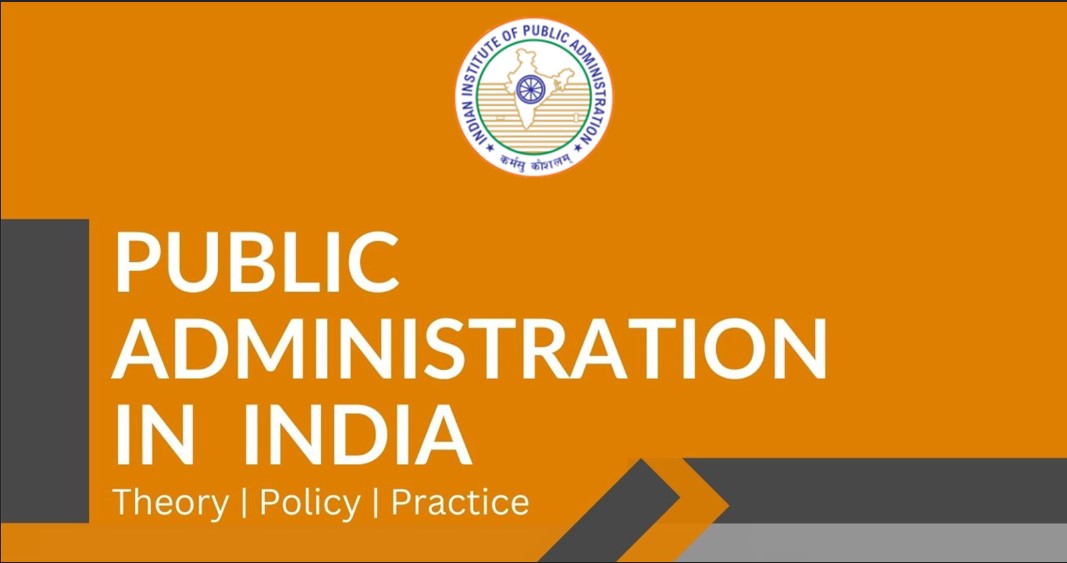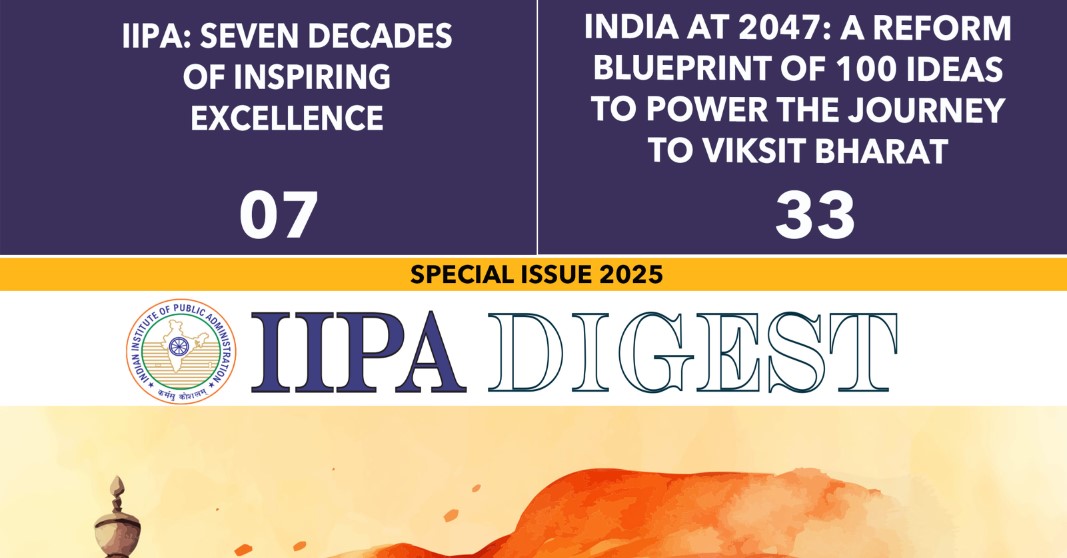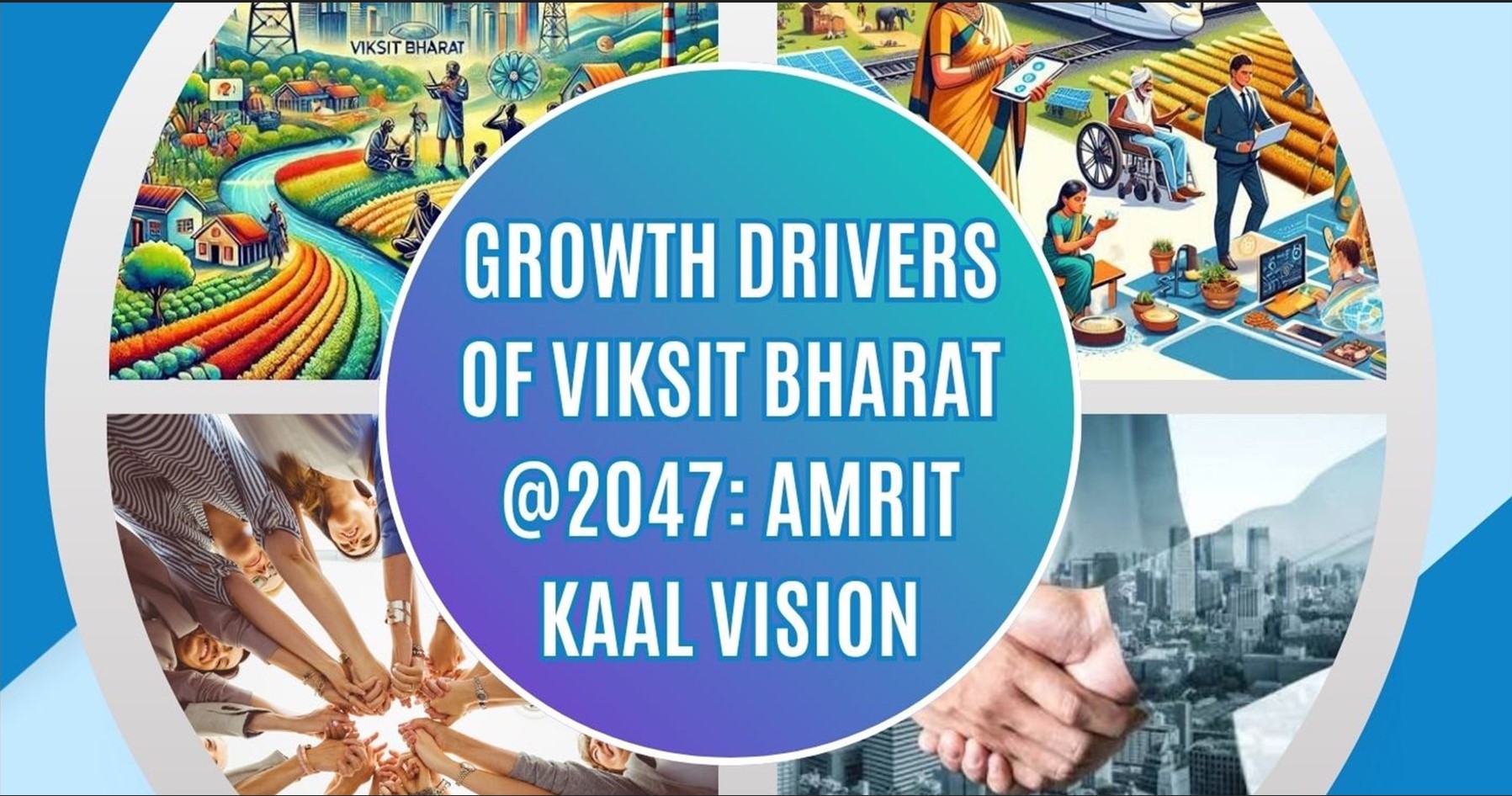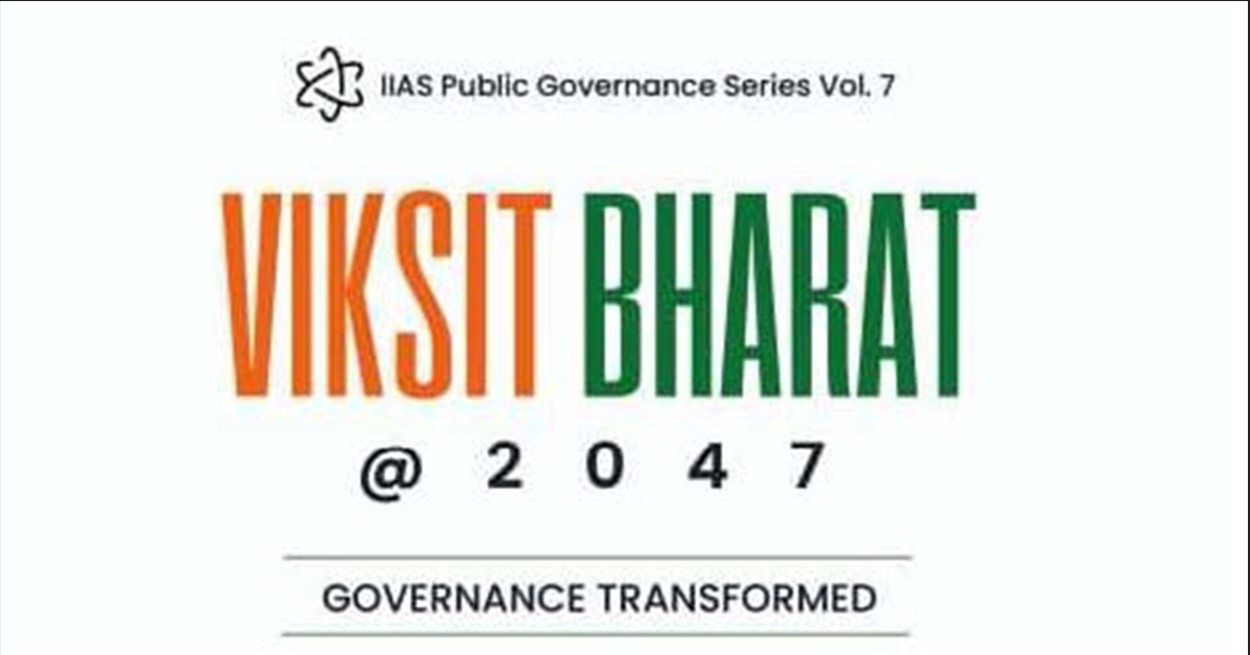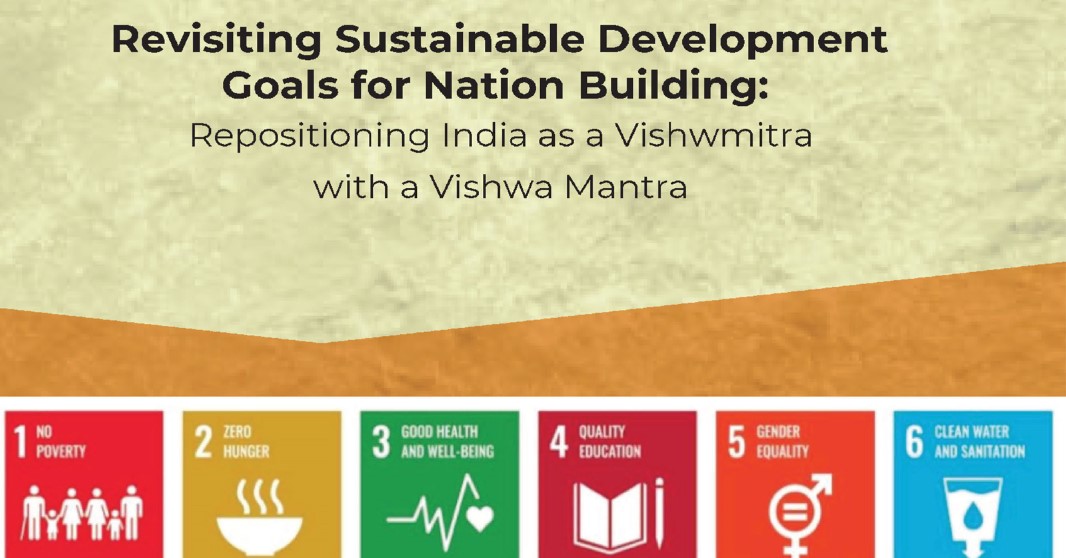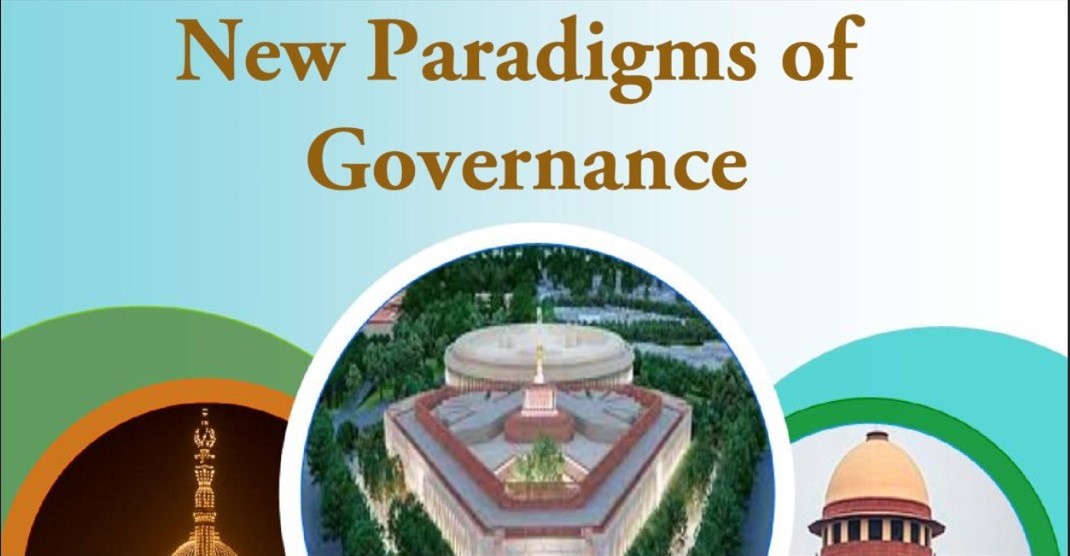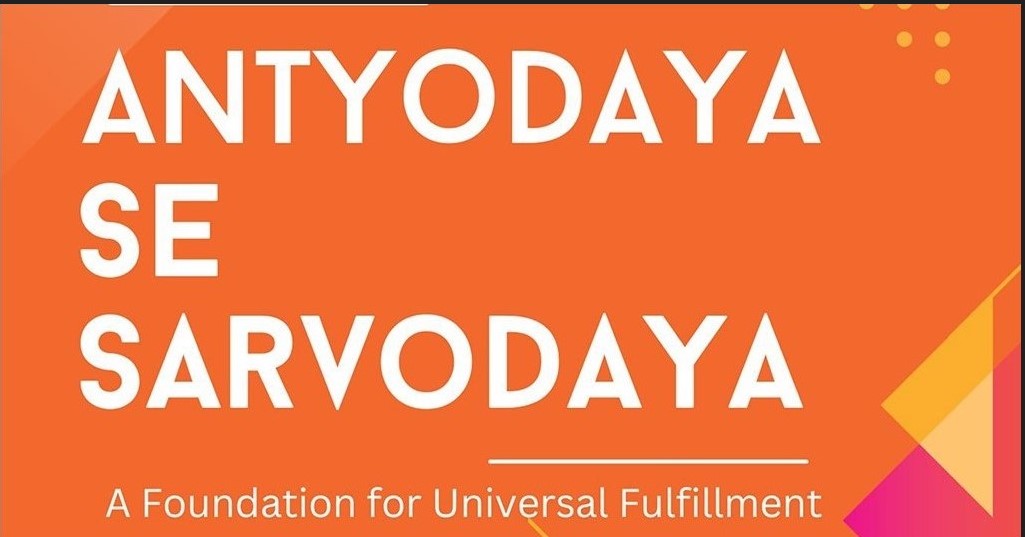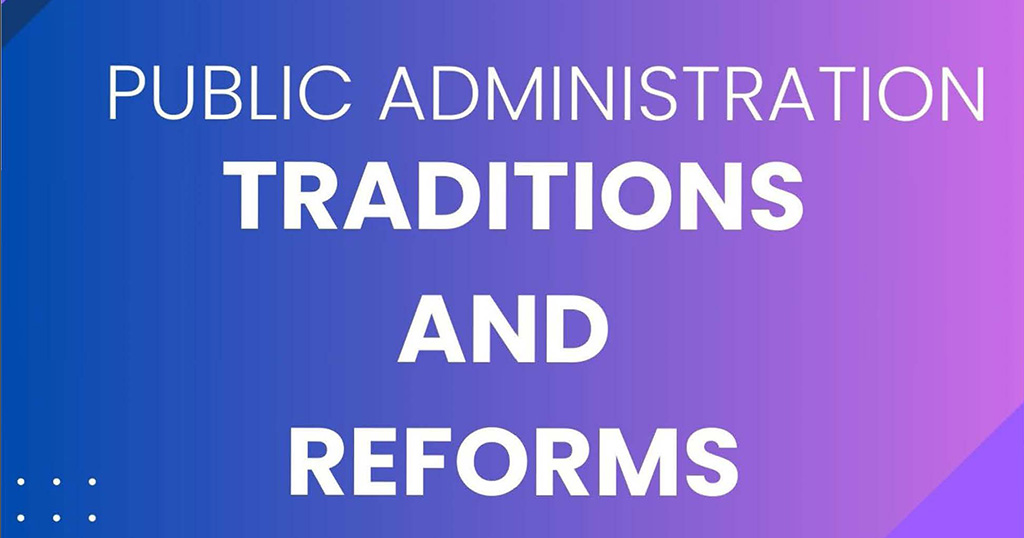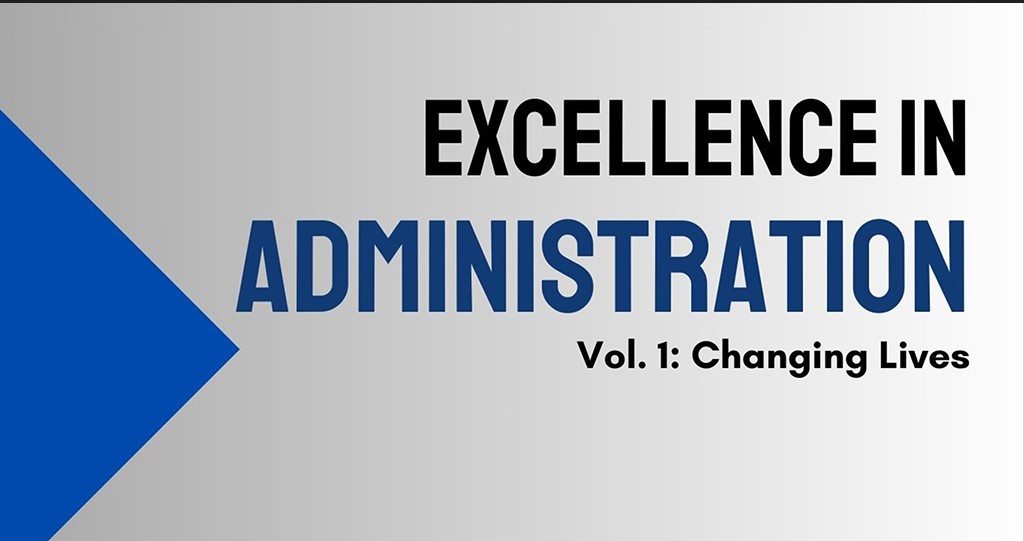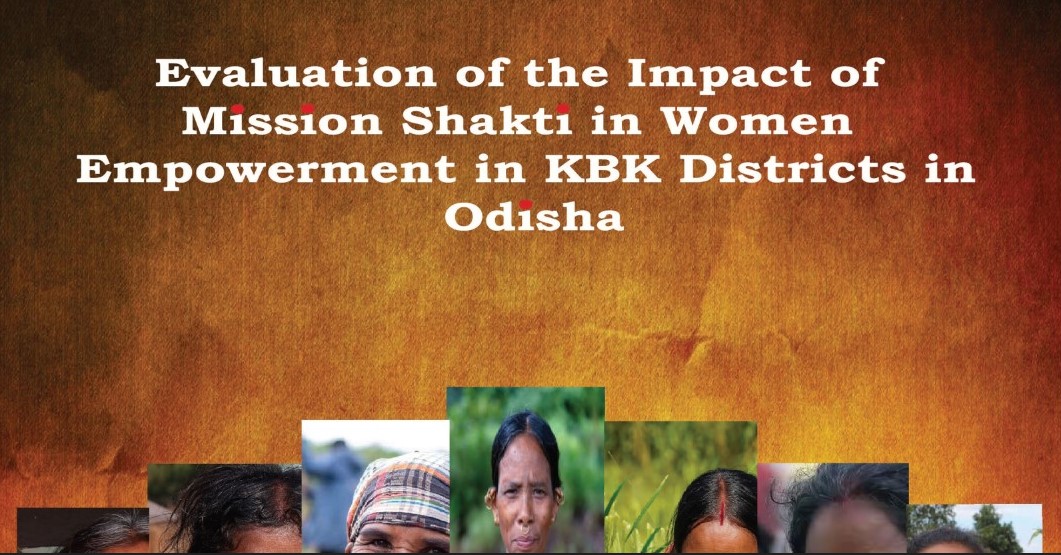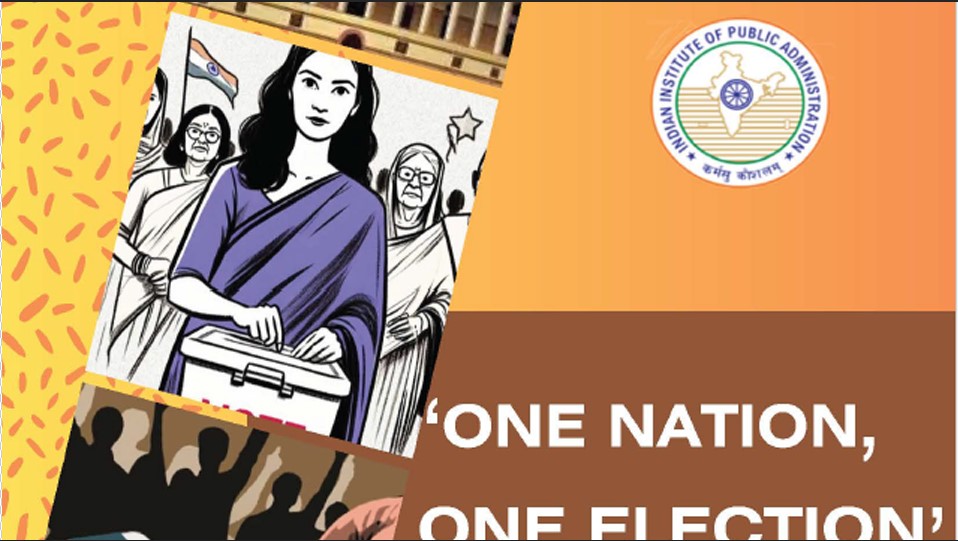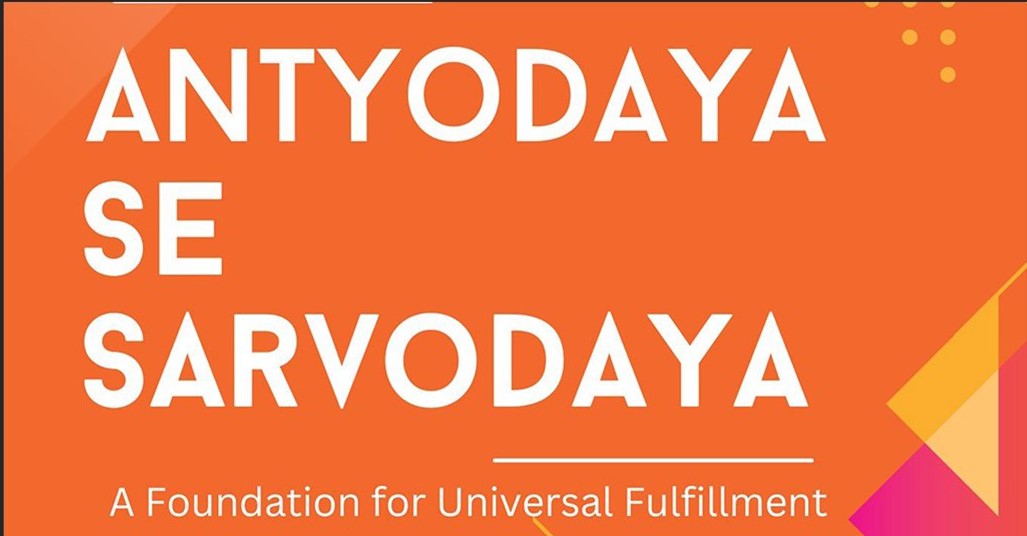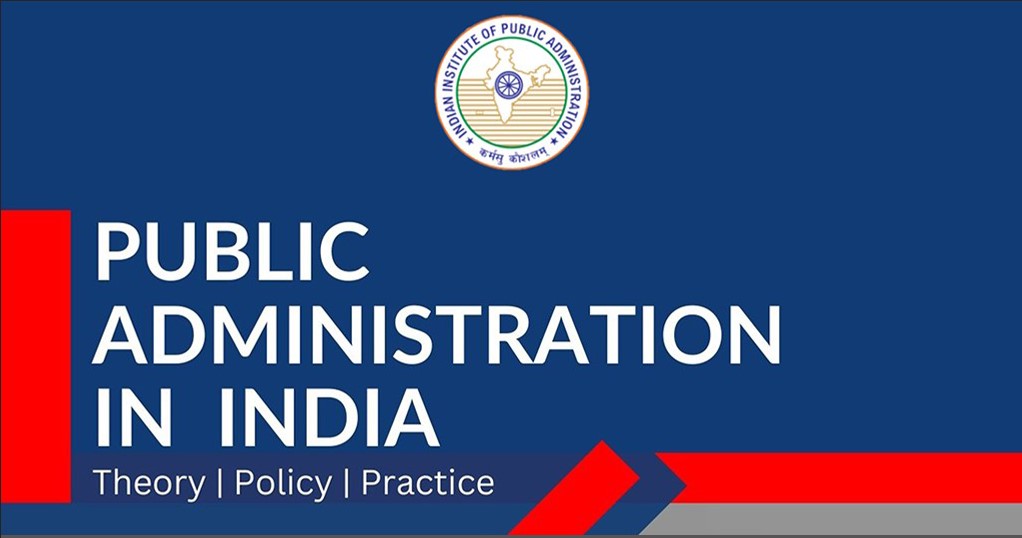Mission Ragi and Economic Benefits to Farmers - A Case Study of Gumla District
Introduction
Millets, often referred to as "smart grains," have been integral to traditional diets in India for centuries. Among these, Ragi (finger millet) stands out due to its exceptional nutritional profile and adaptability to diverse climatic conditions. As a drought-resistant crop, Ragi requires significantly less water compared to staple grains like rice and wheat, making it an ideal choice for cultivation in arid and semi-arid regions. Despite its numerous benefits, Ragi and other millets have faced a decline in cultivation over the past few decades, primarily due to changing dietary preferences, urbanization, and the overshadowing of millets by more popular grains.
In recent years, there has been a renewed interest in millets, driven by growing awareness of their health benefits and the need for sustainable agricultural practices. The Government of India has recognized the potential of millets in addressing food security and nutritional challenges, leading to initiatives such as the declaration of 2023 as the International Year of Millets (IYM). This initiative aims to promote the cultivation and consumption of millets, highlighting their role in enhancing food security, improving public health, and supporting sustainable agricultural practices.
In recent years, there had been a renewed interest in millets, driven by growing awareness of their health benefits and the need for sustainable agricultural practices. The Government of India recognized the potential of millets in addressing food security and nutritional challenges, leading to initiatives such as the declaration of 2023 as the International Year of Millets (IYM). This initiative aimed to promote the cultivation and consumption of millets, highlighting their role in enhancing food security, improving public health, and supporting sustainable agricultural practices.
The Gumla district of Jharkhand emerged as a notable example of successful millet promotion, particularly through the Ragi Mission, which garnered attention for its innovative approaches to improving the livelihoods of local farmers. The district administration's efforts to encourage Ragi cultivation aimed not only to combat malnutrition but also to shift farmers towards more nutritious and water-efficient crops. As a result, Ragi farming had the potential to significantly enhance the economic conditions of farmers in this region.
Literature Review
The literature on millet cultivation, particularly Ragi (finger millet), underscores its historical significance, nutritional benefits, and the recent resurgence of interest due to changing consumer preferences and government initiatives. The Information and Public Relations Office of Gumla, in a press brief dated February 20, 2023, highlighted the success of the Millet (Ragi) Mission, which demonstrated the impact of teamwork and community participation in addressing malnutrition, combating the practice of leaving fields fallow, and increasing the market demand for Ragi. This initiative illustrated the potential of Ragi to contribute to both nutritional security and economic prosperity for local farmers.
Hazaree Singh, (2021) emphasized the cultural importance of Ragi cultivation, noting that women farmers played a crucial role in nurturing seeds, growing crops, and preparing food. Their involvement in agricultural rituals and food preparation showcased the deep-rooted connection between Ragi and local traditions. This cultural aspect is essential for understanding the motivations behind millet cultivation and the potential for revitalizing interest in these crops.
The Telegraph Online, (2023) reported that Ragi fetches favorable prices in the market and that its cultivation is relatively simple compared to other crops. This finding suggests that Ragi can be an attractive option for farmers seeking profitability with less effort. The economic viability of Ragi farming is further supported by Meek (2022), who noted that historically marginalized foods, such as millets, are being rediscovered and valued as niche commodities. This trend reflects a growing recognition of the importance of millets in contemporary diets, particularly in the southern Indian state of Karnataka.
The Economic Times, (2023) indicated that small and marginal farmers in various states, including Maharashtra, Rajasthan, Tamil Nadu, Andhra Pradesh, and Karnataka, were expected to benefit from increased earnings due to government proposals aimed at popularizing millets. The Indian Institute of Millets Research (IIMR) has taken significant steps to restore millet production in the country, implementing various value chain interventions to enhance the economic prospects of millet farmers. More than 50.9 million tonnes of millets were produced in India, accounting for 20% of global production and 80% of Asia's output.
Asia News Monitor, (2023) reported that millet consumption had increased significantly, with home consumption per person rising from 3 kilograms to 14 kilograms per month. The sale of millet products had surged, indicating a growing market for these nutritious grains. The government's "One District, One Product" (ODOP) scheme has further promoted millet cultivation in select districts, directly involving approximately 2.5 crore small farmers in the production of millets. The literature also noted that women from small-town Self-Help Groups (SHGs) have been instrumental in producing millet products that reach supermarkets and shopping centers, forming an integrated supply chain.
Akhtar, (2020) concluded that changing rainfall and temperature patterns in Ranchi, Jharkhand, necessitated the adoption of Ragi cultivation as a viable solution for local farmers. The study emphasized the need for promoting Ragi agriculture in Jharkhand, where climatic conditions are conducive to its growth. The importance of government support, particularly in the form of minimum support prices (MSP), was also highlighted, as it has been shown to encourage farmers to continue cultivating millets.
Despite the potential for Ragi cultivation, challenges remain. The literature indicates that in many states, millet cultivation is not perceived as profitable, emphasizing the need for price support from the government to encourage farmers to continue millet farming. The minimum support price (MSP) offered by the government for Ragi was set at Rs 3,377 per quintal for the marketing year 2021-22, making cultivation profitable in states like Karnataka and Odisha.
Furthermore, a recent financing agreement of US$ 105 million was signed between the Indian government and the UN's International Fund for Agricultural Development (IFAD) for a project in Uttarakhand aimed at doubling rural incomes. This project focused on helping agricultural labourers, micro and small agribusiness owners, and farmers launch and grow profitable ventures while concentrating on cultivating food that is resilient to climate change. The government of Uttarakhand sought to support small-scale farmers in adjusting their production systems to the changing environment by prioritizing farming methods that are more adaptable to climatic shocks.
The literature reviewed demonstrates a growing recognition of the importance of millets, particularly Ragi, in addressing food security, improving nutritional quality, and enhancing the economic conditions of farmers. The successful initiatives in Gumla district serve as a model for other regions, highlighting the potential of Ragi cultivation to contribute to sustainable agricultural practices and the overall well-being of rural communities.
The existing literature on Ragi cultivation revealed several research gaps, including a lack of empirical studies focused on the economic impacts of Ragi farming on farmers' livelihoods, insufficient understanding of market dynamics surrounding millets, and limited evaluations of government initiatives aimed at promoting millet consumption. Additionally, there was a need for more focused research on the role of women in millet cultivation and how their empowerment could enhance community resilience. This study addressed these gaps by providing comprehensive empirical data collected from 86 Ragi farmers in the Gumla district, offering insights into the economic benefits of Ragi cultivation. It analyzed market dynamics and evaluated the effectiveness of government support programmes, thereby contributing valuable knowledge to the discourse on sustainable agriculture.
Objectives
The primary objective of this study was to assess the economic impact of Ragi (finger millet) cultivation on the incomes of farmers in the Gumla district of Jharkhand. Specifically, the study aimed to identify the challenges faced by Ragi farmers in accessing essential resources such as quality seeds, irrigation, and market opportunities. Additionally, it sought to evaluate the effectiveness of government policies and support programmes in promoting Ragi cultivation and improving farmers' livelihoods. The study also aimed to explore opportunities for value addition in Ragi production and marketing to enhance profitability. Furthermore, it intended to analyze the role of women in Ragi farming and their contributions to the agricultural and economic landscape of the region.
To achieve these objectives, the study sought to answer the following research questions:
1. What has been the impact of Ragi cultivation on the income levels of farmers in the Gumla district?
2. What specific challenges do Ragi farmers face regarding resource access, cultivation practices, and market opportunities?
3. How effective have government policies and support programmes been in promoting Ragi cultivation and improving the economic conditions of farmers?
4. What potential exists for value addition in Ragi production, and how can it enhance the profitability of Ragi farming?
5. What role do women play in Ragi cultivation, and how does their involvement influence the overall agricultural and economic dynamics in the Gumla district?
Methodology
This study employed a mixed-methods approach, combining both quantitative and qualitative research techniques to comprehensively assess the economic benefits of Ragi (finger millet) cultivation in the Gumla district of Jharkhand, India. Primary data was collected through a structured questionnaire administered to 86 Ragi farmers across four selected villages, focusing on income levels, cultivation practices, access to resources, and challenges faced in Ragi farming. Additionally, semi-structured interviews were conducted with key stakeholders, including district officials and representatives from Farmer Producer Organizations (FPOs), to gather qualitative insights. Relevant secondary data was also collected from academic literature, government reports, and online resources to support the findings. The Gumla district was chosen as the study area due to its recognition for innovative initiatives in promoting Ragi cultivation through the Ragi Mission, which addressed significant challenges related to malnutrition and agricultural sustainability. This focus aligned with national efforts to enhance food security and nutritional quality in rural areas. By examining the economic benefits of Ragi cultivation in Gumla, this study aimed to contribute valuable insights that could inform policy decisions and support the broader "Millet Movement" in India.
Support to Millets Farming
Ongoing Schemes, Agencies, Organizations, and Projects for Millet Plantation Various schemes and projects are currently being implemented by state and central government agencies to support the development of the agricultural sector, particularly millet cultivation.
The Agriculture Infrastructure Fund (AIF) provides financial support to enhance post-harvest management and community farming assets. The government offers up to ₹2 crore with a 3% interest rebate for constructing essential infrastructure such as cold storage and processing units. This initiative aims to modernize the agricultural sector and improve the livelihoods of farmers.
NABARD plays a crucial role in promoting rural development and agriculture by supporting small businesses and farmers through credit plans, marketing platforms, and skill development training. Its initiatives, such as the Kisan Credit Card scheme, provide concessional credit to meet farmers' working capital needs.
NAFED is instrumental in ensuring food security in India by promoting cooperative marketing of agricultural produce. It assists farmers with technical advice, market research, and the procurement of quality inputs, while also promoting FPOs and distributing certified seeds.
The National Horticulture Board (NHB) focuses on advancing cold chain infrastructure and commercial horticulture, providing monetary support and capacity building for Ragi farmers and FPOs. It aims to shift farmers from low-value to high-value crops, enhancing their economic prospects.
Farmers Producers Organizations (FPOs) offer small farmers end-to-end services, including inputs, technical assistance, processing, and marketing. They play a vital role in developing millet businesses and connecting rural and urban markets, particularly for women entrepreneurs.
The PM-Kisan Samman Nidhi (PM-KISAN) scheme provides financial support of ₹6,000 annually to eligible farming households, enhancing their purchasing power and reducing debt. Additionally, the Agricultural Technology Management Agency (ATMA) operates at the district level, facilitating funds and resources for agricultural activities, thereby enhancing farmers' access to technology and support.
Organizations like the Indian Institute of Millets Research (IIMR) and JSLPS are also pivotal in promoting millet cultivation through research, capacity building, and the implementation of various government initiatives. These organizations work collaboratively to enhance the production and marketing of millets, ensuring that farmers receive the necessary support and resources.
Status Farming and Sale of Millets
Since 2014-15, there has been a consistent increase in the availability of quality millet seeds, with a notable production of 8.20 lakh quintals in 2022-23, surpassing the requirement of 5.42 lakh quintals. This increase can be attributed to special efforts made after the National Year of Millets celebrations in 2018, which led to enhanced seed production.
The Farm Debt Waiver Scheme has also positively impacted farmers' livelihoods by improving their income and encouraging better savings habits. Additionally, the Minimum Support Price (MSP) for Ragi has significantly increased, benefiting farmers and fostering economic security. The 'millet movement' is reshaping India's food landscape, with an 8% increase in production over the past year.
Despite a historical decline in millet consumption, there is a growing awareness of its nutritional benefits, leading to an increase in demand, particularly in rural areas. India's millet exports have also seen a remarkable increase of 29.56% in 2022-2023, with significant markets in the UAE, Saudi Arabia, and Japan.
The ICAR-IIMR has supported over 250 start-ups focused on millet products, fostering innovation and commercialization in the sector. Various national and international events have been organized to promote millets, including the Global Shree Anna Conference and the International Nutri Cereal Convention, highlighting India's commitment to promoting these crops globally.
Findings
Quantitative Data Analysis:
Economic Impacts of Ragi Cultivation
Table 1: Economic impacts of Ragi cultivation on farmers' incomes before and after its adoption.
The economic analysis indicated that Ragi farming significantly improved the economic conditions of the respondents. On average, farmers reported a 50% increase in their annual income after adopting Ragi cultivation. The average yield per acre also increased by 50%, reflecting the crop's resilience and adaptability. Additionally, the market price for Ragi improved, contributing to enhanced profitability.
Challenges Faced by Farmers
Table 2: Challenges faced by Ragi farmers
The most significant issue was limited access to quality seeds, reported by 64% of respondents. Scarcity of irrigation water and inadequate market access were also prominent challenges, affecting the overall productivity and profitability of Ragi farming.
Role of Government Support Programmes
Table 3: Government support programmes among the respondents.
The majority of respondents reported that government support programmes, particularly training on Ragi cultivation, had a positive impact on their farming practices. However, only 58.1% felt that subsidies for inputs were effective, and a smaller percentage highlighted the need for timely distribution of resources and access to market information.
Qualitative Data Analysis:
1. Cultural Significance of Ragi: Many farmers articulated a strong cultural connection to Ragi, viewing it as more than just a crop for income generation. It was described as an integral part of their traditional diet and agricultural heritage. Women farmers, in particular, emphasized their roles in nurturing Ragi seeds and participating in rituals associated with planting and harvesting. This cultural significance not only fosters a sense of identity but also motivates farmers to continue cultivating Ragi despite the challenges they face.
2. Economic Benefits and Livelihood Improvement: Respondents consistently reported that Ragi cultivation had led to significant improvements in their economic conditions. Farmers noted a marked increase in their annual incomes since adopting Ragi farming, attributing this to the crop's resilience and favorable market prices. Many expressed optimism about the future of Ragi cultivation, highlighting its potential to enhance their livelihoods and contribute to the local economy.
Recommendations
1. Improved Access to Quality Seeds: Given that 64% of farmers reported limited access to quality seeds, the establishment of seed banks and collaboration with agricultural research institutions to provide high-yielding Ragi seed varieties should be prioritized. This will help increase productivity and income for farmers.
2. Enhanced Irrigation Facilities: With 52.2% of respondents highlighting water scarcity as a significant challenge, investment in irrigation infrastructure is deemed crucial. The implementation of rainwater harvesting systems and the promotion of efficient irrigation techniques, such as drip irrigation, should be encouraged to ensure a reliable water supply for Ragi cultivation.
3. Market Access and Information: The study revealed that inadequate market access is a challenge for 46.5% of farmers. The development of better market linkages and the provision of training on market trends and pricing should be undertaken to empower farmers to negotiate better prices for their produce. Direct connections between farmers and consumers should also be established to reduce post-harvest losses.
4. Strengthening Government Support Programmes: While the positive impact of government initiatives like the Ragi Mission has been acknowledged by farmers, the need for timely distribution of subsidies and resources has been expressed. Improvements in the implementation of these programmes and the conduction of regular training sessions on best practices in Ragi cultivation and marketing should be made to enhance their effectiveness.
5. Empowerment of Women Farmers: The qualitative analysis highlighted the crucial role of women in Ragi farming. Gender-inclusive agricultural policies should be promoted, and targeted training and resources for women should be provided to enhance their contributions to agricultural productivity and household nutrition, ultimately benefiting the entire community.
6. Awareness and Promotion of Ragi: To address the growing interest in millets, awareness campaigns to promote the nutritional benefits of Ragi and its role in sustainable agriculture should be launched. Collaborations with local organizations, schools, and health institutions should be pursued to increase consumer demand for Ragi products, thereby benefiting farmers.
7. Research and Development: Continued research into climate-resilient Ragi varieties and sustainable farming practices is essential. Partnerships between local farmers and agricultural universities should be encouraged to facilitate knowledge exchange and innovation in Ragi cultivation.
Conclusion
This study highlighted the significant economic benefits of Ragi (finger millet) cultivation for farmers in the Gumla district of Jharkhand, demonstrating its potential to improve livelihoods and contribute to food security. The findings revealed that Ragi farming led to a 50% increase in annual incomes and a 50% increase in average yield per acre, showcasing the crop's resilience and adaptability. However, farmers face several challenges, including limited access to quality seeds (64%), water scarcity (52.2%), and inadequate market access (46.5%).
The role of government support programmes, such as the Ragi Mission, was acknowledged as beneficial, yet improvements in the timely distribution of resources and training are necessary. Additionally, the qualitative analysis underscored the critical contributions of women in Ragi farming, emphasizing the need for gender-inclusive policies.
In conclusion, revitalizing Ragi cultivation in Gumla can play a vital role in fostering sustainable agricultural practices and enhancing the resilience of rural communities. By implementing the recommendations outlined in this study, stakeholders can collaboratively strengthen Ragi farming, improve the economic conditions of farmers, and contribute to broader goals of food security and nutritional health in the region. Ultimately, promoting Ragi as a sustainable and profitable crop can lead to significant improvements in the livelihoods of farmers and the overall well-being of the community.
Bibliography
1. Agriculture in Jharkhand | Agricultural Data of Jharkhand. (n.d.). Available at https://www.indiastat.com/jharkhand-state/data/agriculture
2. Agriculture Infrastructure Fund (AIF). (n.d.). Retrieved from [URL]
3. APEDA (2023). Agricultural and Processed Food Products Export Development Authority.
https://agriexchange.apeda.gov.in/Weekly_eReport/Millets_Report.pdf
4. APEDA signs MoU with GB Pant University of Agriculture and Technology, Pantnagar for boosting agri-exports from Uttarakhand. (n.d.). Available at https://pib.gov.in/PressReleaseIframePage.aspx?PRID=1763978
5. Chandra A, Singh AK, Maht B. Processing and Value Addition of Finger Millet to Achieve Nutritional and Financial Security. Int. J Curr. Microbiol App. Sci. 2018; 7:2901-2910.
6. DES (2023). Directorate of Economics and Statistics, Department of Agriculture and Farmers Welfare, Ministry of Agriculture and Farmers Welfare, Government of India.
https://eands.dacnet.nic.in/APY_96_To_06.htm
7. Economic Times (Online); New Delhi. (2023, February 3). Small Farmers may Reap Benefits from FM's Plan to Make India a Millet Hub [Companies].
8. G20 Agriculture Ministers’ Meeting: Outcome Document and Chair’s Summary. (n.d.). Available at http://www.g20.utoronto.ca/2023/230618-agriculture.html
9. Government to roll out several programmes in the country and abroad for popularizing Millets and other nutri-cereals, says Union Agriculture Minister. (n.d.). Available at
https://pib.gov.in/PressReleaseIframePage.aspx?PRID=1845652
10. Gowri, U., & Shivakumar, K. M. (2020). Millets: Growth trends and cost effectiveness in India. Agricultural Research Journal, 57(5), 805. Available at https://doi.org/10.5958/2395-146x.2020.00118.0
11. Hazareesingh, Sandip. (2021). Modern Asian Studies, 55(3), 938-972.
12. IFAD and Government of Uttarakhand partner to double rural incomes and build climate resilience in the state. (n.d.). IFAD. Available at https://www.ifad.org/en/web/latest/-/ifad-and-government-of-uttarakhand-partner-to-double-rural-incomes-and-build-climate-resilience-in-the-state
13. Information and Public Relations Office, Gumla: 20 February 2023 Access Number: 59.
14. Meek, David. (2022). Agriculture and Human Values; Dordrecht, 39(3), 871-883. DOI:10.1007/s10460-021-10287-x.
15. Microsoft Word - REOI Hiring TSA for Production Market led Initiative (jslps.s3.ap-south-1.amazonaws.com).
16. Millet Bank - Our Story. (n.d.). Milletbank. Available at
https://milletbank.in/pages/our-story.
17. Millet prices surge up to 100% as MNCs enter market with pasta, noodles, snacks & erratic weather hits supply. (2023, December 5). The Times of India. Available at
https://timesofindia.indiatimes.com/business/india-business/millet-prices-surge-up-to-100-as-mncs-enter-market-with-pasta-noodles-snacks-erratic-weather-hits-supply/articleshow/105747521.cms
18. National Agriculture Infra Financing Facility. (n.d.). Available at https://agriinfra.dac.gov.in.
19. Nishar Akhtar, Anwesha Dey, Gufran Ahmad, Firoz Ahmad, and Md. Mahtab Rashid. (2020). International Journal of Current Microbiology and Applied Sciences, 9(2). Available at https://doi.org/10.20546/ijcmas.2020.902.058.
20. P., & P. (2023, April 21). Ragi revolution in Jharkhand’s Gumla becomes case study for Harvard Business School. Deccan Herald. Available at https://www.deccanherald.com/india/Ragi-revolution-in-jharkhands-gumla-becomes-case-study-for-harvard-business-school-1211630.html.
21. Research and Markets (2023). Millet Market Size & Share Analysis - Growth Trends & Forecasts (2023 - 2028).
https://www.researchandmarkets.com/report/millet
22. Shivam Dubey. (2024). A review on usefulness of millets in current prospects. IP Journal of Nutrition Metabolism and Health Science, 6(4), 157-160. DOI:10.18231/j.ijnmhs.2023.026 License CC BY-NC-SA 4.0.
23. Success Story of Ragi Laddu | Gumla | India. (n.d.). Available at
https://gumla.nic.in/document/success-story-of-Ragi-laddu/.
24. Zimbabwe turns to traditional grains as climate-smart, healthier option. (2024, February 25). FW Africa. Available at
https://www.foodsafetyafrica.net/zimbabwe-turns-to-traditional-grains-as-climate-smart-healthier-option/.
25. (Download Reports | Ministry of Statistics and Programme Implementation | Government of India, n.d.). Available at https://www.mospi.gov.in/download-reports.
26. Ghosal, Sutanuka. (2023). The Economic Times (Online); New Delhi. 03 Feb 2023.
27. India, T. O. (2023, June 25). Gumla farmers turn to millet for better yield. The Times of India. Available at
https://timesofindia.indiatimes.com/city/ranchi/gumla-farmers-turn-to-millet-for-better-yield/articleshow/101250261.cms.
28. Ministry of Food Processing Industries, Government of India. (n.d.). Operation guidelines on production-linked incentive scheme for millet-based products. PDF. Retrieved from
https://www.mofpi.gov.in/sites/default/files/operation_guidelines_on_production_linked_incentive_scheme_for_millet_based_products_0001.pdf.
29. NABARD (2023). International Year of Millets 2023. National Bank for Agriculture and Rural Development. Available at:
https://www.nabard.org/international-year-of-millets-2023.aspx.
30. NITI Aayog (2023). Promoting millets in diets: Best practices across states/UTs of India. Available at: https://niti.gov.in/sites/default/files/2023-06/Report-on-Promoting-Best-practices-onMillet-26_4_23.pdf.
31. Online Web Desk, Telegraph Online Raipur. (2023, June 7). ‘Chhattisgarh: Cultivation of Ragi brings economic prosperity as farmers witness life-changing results’. Available at:
https://www.telegraphindia.com/india/chhattisgarh-cultivation-of-Ragi-brings-economic-prosperity-as-farmers-witness-life-changing-results/cid/1943188, Accessed 14 September 2023.
32. Various Authors. (2023). India: PM inaugurates the Global Millets (Shree Anna) Conference. Asia News Monitor; Bangkok. 21 Mar 2023.
33. Anonymous. Food Uses of Small Millets and Avenues for Further Processing and Value Addition. Project Coordination Cell, All India Coordinated Small Millets Improvement Project, ICAR, UAS, GKVK, Bangalore, India.
Leave a comment
More articles from Governance & Polity
